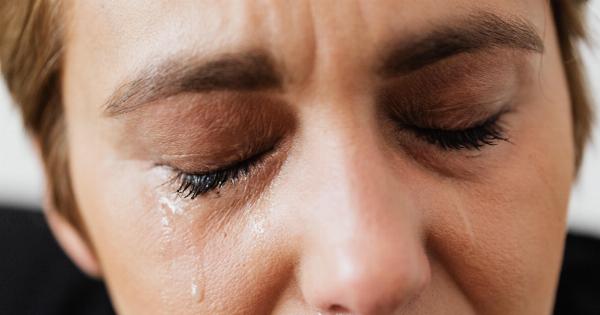Postpartum depression is a common mental health disorder that occurs in women after childbirth. It is estimated to affect 1 in 7 women, with symptoms including feelings of sadness, hopelessness, worthlessness, and guilt.
The exact cause of postpartum depression is unknown, however, several factors have been identified to increase the risk, including maternal age.
Maternal Age and Postpartum Depression
Research has shown a correlation between maternal age and postpartum depression, with studies suggesting that women who give birth at an older age are at a higher risk of experiencing postpartum depression. A study conducted by Zhou et al.
(2020) found that women who gave birth at an older age were more likely to experience postpartum depression, compared to women who gave birth at a younger age.
The study involved 316 women, of which 158 were aged 35 and above, while the other 158 were aged between 22 and 34.
The results showed that 33.5% of the women aged 35 and above reported experiencing postpartum depression symptoms, compared to 19.6% of the younger women. The study suggests that maternal age may be a risk factor for postpartum depression.
Factors Contributing to the Connection between Childbirth Age and Postpartum Depression
Several factors have been identified as contributing to the connection between childbirth age and postpartum depression, including:.
1. Hormonal Changes
Childbirth causes a significant change in hormone levels, with estrogen and progesterone levels dropping rapidly after delivery. These hormonal changes have been linked to the onset of postpartum depression.
Women who give birth at a later age may experience a more significant drop in hormone levels, which may be a contributing factor to their higher risk of postpartum depression.
2. Increased Stress Levels
Older women may experience increased stress levels during pregnancy, childbirth, and postpartum, compared to younger women.
This increased stress may be due to complications during pregnancy, fear of childbirth, and concerns about the baby’s health. Increased stress levels have been linked to postpartum depression.
3. Lack of Social Support
Older women may be less likely to have family members or friends who are able to provide support during the postpartum period.
This lack of social support may contribute to feelings of isolation and loneliness, which may increase the risk of postpartum depression.
4. Financial Stress
Women who give birth at an older age may experience financial stress, particularly if they have had to take time off work or have additional expenses associated with childcare. Financial stress has been linked to postpartum depression.
Preventative Measures
While the exact cause of postpartum depression is unknown, there are several preventative measures that women who give birth at an older age can take to lower their risk of developing the condition:.
1. Seek Support
It is essential to seek support from family members, friends, or healthcare professionals during the postpartum period. This support can help to reduce stress levels and feelings of isolation, which may lower the risk of postpartum depression.
2. Self-care
It is essential to engage in self-care activities, including getting enough sleep, eating a healthy diet, and engaging in physical activity, to help lower the risk of postpartum depression.
3. Identify Triggers
Identifying triggers that may contribute to feelings of sadness or anxiety can help to prevent the onset of postpartum depression. Triggers may include lack of sleep, stress, and hormonal changes.
Conclusion
Childbirth age has been identified as a risk factor for postpartum depression, with older women being at a higher risk of developing the condition.
Several factors contribute to this connection, including hormonal changes, increased stress levels, lack of social support, and financial stress. However, there are several preventative measures that women who give birth at an older age can take to reduce their risk of postpartum depression, including seeking support, engaging in self-care activities, and identifying triggers.





























